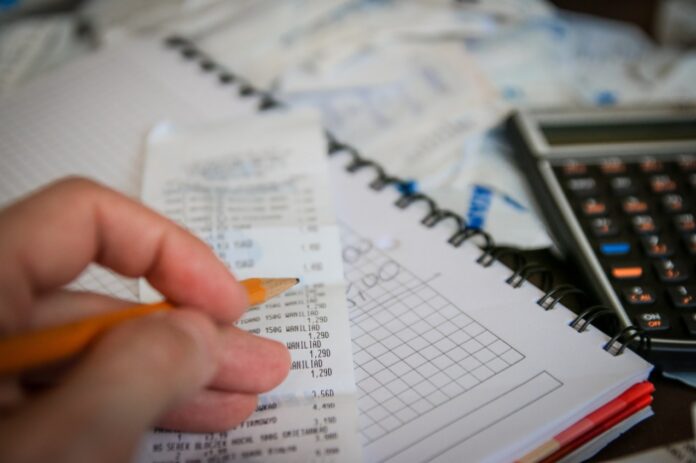It seems like having a side hustle is a thing nowadays. It could be anything, from driving to creating and marketing. It’s a gig economy and the IRS is interested in it. So, if you have a side hustle, let’s talk a bit about your responsibilities and obligations for taxes. There are new forms and some new language for which you’ll need to be aware of. Here are some of the basics.
The IRS calls you an independent contractor or as I prefer, a solopreneur. So, of course, there is an expanded set of IRS rules and regulations that impact you. The number 1088 will become important to you. There are several: (Form 1099-NEC, Form 1099-K, Form 1099-MISC). Don’t be surprised to get one of these forms in the mail – don’t throw it away as the IRS also gets a copy of it. So, let’s take a look at them but first, you must understand that you must report your income to the IRS and to the State and maybe some local tax authorities also. Income first.
Income
In a broad sense, income is everything except what isn’t as defined by the IRS. This includes income from your side job or freelance work. So if you sell online, drive, create, and make some money from these, it’s income. Even if you barter where you exchange your service or goods with others instead of money, it’s income to you.
This means you will have to keep good records, your receipts and bills as you can deduct certain business expenses. It’s your responsibility to keep track of your deductible costs so that you can correctly calculate the tax you owe. Now that we know about income, let’s talk about those 1099 Forms.
Form 1099-NEC – Non-Employee Compensation
Did someone pay you $600 or more during the year? You may receive one of these. You won’t get a W-2 Form as you’re not an employee. Instead, you’ll get this one. As I said before, the IRS gets a copy too. And if you pay someone $600 or more during the year you must also file this form (one to the person you paid and one to the IRS). This form is due out by January 31 so don’t get confused with the April 15th deadline for filing your individual income tax return.
Form 1099-K – Payment Card and Third-Party Network Transaction
Yep, that’s the name of this form. So what does that really mean? This form is a new one and was born in 2021. If you have a side hustle, you might receive this Form from companies like Venmo, PayPal, eBay, ETSY, or crowdfunding sites.
For this year, 2023, Businesses that received more than $20,000 and had more than 200 transactions during the year. However, the law as passed in 2021 drops the amount to be reported to $600. Don’t be alarmed yet. The IRS has had to overcome many difficulties in implementing this. So the IRS decided to take a phased approach instead. The IRS plans to introduce an interim threshold of $5,000 for TY 2024. For TY 2025, the IRS expects to implement the $600 threshold fully.
Form 1099-MISC – Miscellaneous Income
As the name implies, this form is for income that doesn’t quite fit into other categories of income. This includes rent from real estate, royalties, or other types of income. So, if you have some other type of income you may also receive this form.
Form 1099-MISC usually isn’t the standard form for most gig workers, but those who diversify their income streams may encounter it.
So What about Social Security and Medicare Tax?
As an employee or when you were employed, these taxes were also paid. Now that you’re on your own how do these get paid? Another thing you need to know about taxes, this what the IRS calls, Self-Employment Tax. When is that due to be paid you ask?
For self-employed folks who have a side hustle, the IRS has come up with quarterly estimated tax payments spread throughout the year. For TY 2024, the four due dates are April 15 (except taxpayers living in Maine and Massachusetts have until April 17), June 17, September 16, and January 15, 2025.
Think of it this way. Employees have these taxes paid by withholding from their paychecks every two weeks, weekly or monthly. But being self-employed this doesn’t happen. The IRS wants its tax throughout the year so they created the quarterly estimated tax payments. Further, if you don’t make these quarterly payments timely, there is a penalty for not doing it. The IRS bases these penalties on either paying too little in estimated tax or not paying each installment on time. These payments are made on Form 1040-ES to the IRS. States also have their own forms for quarterly estimated payments so don’t forget about your state tax obligations.
The Big So-What
This is just the basics for those who have a side hustle. Depending on your personal tax world there may be other forms that you will need to know about. The resources listed below is a good place to start for more information. If you get confused talk with a tax professional to help you.
Here are some resources for you. Enjoy!
https://www.irs.gov/businesses/small-businesses-self-employed/self-employed-individuals-tax-center
https://www.irs.gov/businesses/small-businesses-self-employed/estimated-taxes
https://www.irs.gov/businesses/small-businesses-self-employed/manage-taxes-for-your-gig-work
Find a Home-Based Business to Start-Up >>> Hundreds of Business Listings.
















































